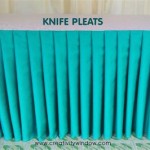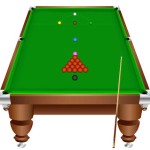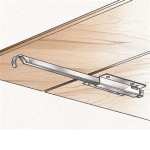The Enduring Appeal of Rustic Coffee And End Tables
Rustic coffee and end tables represent a popular furniture choice for homeowners seeking to introduce warmth, character, and a sense of natural beauty into their living spaces. This style often leverages reclaimed wood, distressed finishes, and robust construction techniques to evoke a feeling of simpler times and a connection to the outdoors. The aesthetic versatility allows seamless integration into diverse interior design themes, ranging from farmhouse and cottage-core to industrial and modern minimalist styles, making rustic coffee and end tables a timeless furniture option.
The term "rustic" encompasses a broad spectrum of design elements, but certain characteristics consistently define the style. These include the use of natural materials like wood (often repurposed or with visible grain patterns), metal accents such as wrought iron or aged brass, and a deliberately imperfect finish that showcases the unique history and character of the materials. This emphasis on natural materials and handcrafted details distinguishes rustic furniture from mass-produced, contemporary alternatives.
When selecting rustic coffee and end tables, considerations extend beyond aesthetics. Factors such as size, shape, storage options, and durability also play a significant role in ensuring that the furniture pieces effectively complement the existing décor and meet the functional needs of the household. Careful planning and mindful selection are essential for creating a cohesive and inviting living space.
Key Point 1: Materiality and Construction Techniques
The choice of materials is paramount in defining the rustic aesthetic. Solid wood, particularly reclaimed or sustainably sourced lumber, is the cornerstone of most rustic coffee and end tables. Reclaimed wood, salvaged from old barns, factories, or even shipwrecks, brings a unique history and inherent character to each piece. The presence of knots, nail holes, and variations in grain patterns are not considered imperfections, but rather valued characteristics that contribute to the overall rustic charm.
Common wood species used in rustic furniture construction include pine, oak, maple, and walnut. Pine is a popular choice due to its affordability, workability, and distinctive grain pattern. Oak is prized for its strength, durability, and rich color variations. Maple offers a smooth, fine-grained surface that lends itself well to various finishes. Walnut is a premium hardwood renowned for its deep, chocolate-brown hue and elegant grain patterns.
In addition to wood, metal accents are often incorporated into rustic coffee and end tables. Wrought iron legs, corner brackets, or drawer pulls add a touch of industrial flair and visual contrast to the natural warmth of the wood. Aged brass or copper hardware can also be used to enhance the vintage appeal of the furniture. These metal elements are often hand-forged or deliberately distressed to create a sense of authenticity and craftsmanship.
Construction techniques employed in rustic furniture making prioritize durability and longevity. Solid wood joinery, such as dovetail joints, mortise-and-tenon joints, and biscuit joints, are used to create strong and stable connections between the various components of the table. These traditional joinery methods ensure that the furniture can withstand the rigors of daily use and last for generations.
The finish applied to rustic coffee and end tables plays a crucial role in enhancing the natural beauty of the wood and protecting it from wear and tear. Common finishing techniques include staining, distressing, and sealing. Staining can be used to enhance the wood's natural color or create a specific tone. Distressing involves intentionally adding imperfections, such as scratches, dents, or worn edges, to give the furniture a weathered and aged appearance. Sealing with varnish, lacquer, or oil provides a protective layer that repels moisture and prevents staining.
Key Point 2: Design Elements and Aesthetic Versatility
Rustic coffee and end tables are available in a wide range of designs, shapes, and sizes to suit various living room layouts and personal preferences. Common shapes include rectangular, square, round, and oval. Rectangular coffee tables are a versatile choice that can accommodate a variety of seating arrangements. Square coffee tables work well in smaller spaces or with sectional sofas. Round coffee tables create a more intimate and conversational atmosphere. Oval coffee tables can add a touch of elegance and sophistication to a room.
The height of the coffee table is an important consideration, as it should be proportional to the height of the surrounding seating. Generally, a coffee table should be approximately the same height as the seat cushions of the sofa or slightly lower. End tables should be approximately the same height as the armrests of the adjacent chairs or sofas.
Storage options are another important factor to consider when selecting rustic coffee and end tables. Some tables feature drawers, shelves, or cabinets that provide ample storage space for books, magazines, remote controls, and other living room essentials. Tables with open shelves are ideal for displaying decorative items or storing blankets and throws. Tables with drawers can help to keep clutter out of sight and maintain a tidy living space.
The aesthetic versatility of rustic coffee and end tables allows them to be seamlessly integrated into a variety of interior design themes. In farmhouse-style living rooms, rustic tables with distressed finishes and vintage-inspired hardware can complement shiplap walls, cozy textiles, and antique accents. In cottage-core interiors, rustic tables with floral patterns and pastel colors can create a charming and whimsical atmosphere. In industrial-style living rooms, rustic tables with metal legs and exposed wood grain can add a touch of warmth and organic texture to the stark and minimalist aesthetic.
Rustic coffee and end tables can also be incorporated into modern minimalist living rooms to create a sense of contrast and visual interest. The natural warmth and character of the wood can soften the clean lines and neutral color palette of a modern space. A rustic coffee table can serve as a focal point in a modern living room, adding a touch of personality and individuality to the overall design.
Key Point 3: Maintenance and Longevity
Proper maintenance is essential for preserving the beauty and longevity of rustic coffee and end tables. Regular cleaning and careful handling can help to prevent damage and ensure that the furniture remains in good condition for years to come. The specific maintenance requirements will vary depending on the type of wood, finish, and construction techniques used in the furniture.
For most rustic coffee and end tables, dusting with a soft cloth is sufficient for routine cleaning. Avoid using harsh chemicals or abrasive cleaners, as these can damage the finish. For more stubborn stains or spills, a mild soap and water solution can be used. Be sure to dry the surface thoroughly after cleaning to prevent water damage.
Protecting the furniture from excessive moisture is also important. Avoid placing drinks directly on the surface of the table without using coasters. If a spill occurs, wipe it up immediately to prevent staining. Consider using a humidifier or dehumidifier to maintain a consistent humidity level in the room, as excessive humidity can cause wood to warp or crack.
Sunlight can also damage wood furniture over time, causing it to fade or discolor. Avoid placing rustic coffee and end tables in direct sunlight. If this is unavoidable, consider using curtains or blinds to filter the sunlight. Applying a UV-protective finish can also help to protect the wood from sun damage.
Regularly inspect the furniture for signs of wear and tear, such as loose joints, cracks, or chips in the finish. Address any issues promptly to prevent them from escalating. Tighten loose screws or bolts to reinforce the structure of the table. Repair any cracks or chips in the finish with a wood filler or touch-up paint.
With proper care and maintenance, rustic coffee and end tables can last for generations, becoming cherished family heirlooms. The inherent durability and timeless appeal of this furniture style make it a worthwhile investment for homeowners seeking to create a warm, inviting, and character-filled living space. The enduring appeal of rustic furniture lies in its ability to connect us to the past, celebrate the beauty of natural materials, and create a sense of comfort and authenticity in our homes.

Rustic Living Room Set Large Farmhouse Coffee Table With

Claremont Rustic Wood Coffee Table And End Set With Drawer White Alaterre Furniture Target

Rustic Coffee Table Sets End Tables Country

Rustic Coffee Table End Ashley

Grand Hacienda Trunk Coffee Table And Two End Tables The Rustic Mile

Coffee And Side Tables Ragnarokdesigns

Rustic Coffee Table And Side Leila Onehappyhome

Farmhouse Living Room Set End Tables And Coffee Table With Distressed White Base Dark Walnut Top Rustic Furniture X

Better Homes And Gardens Rustic Country Coffee End Table Set Com

Oxbow Coffee Table Set Rustic Furniture Depot








